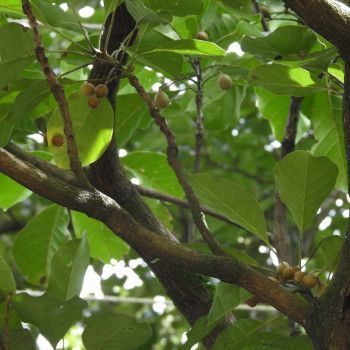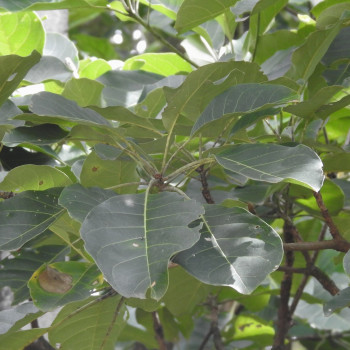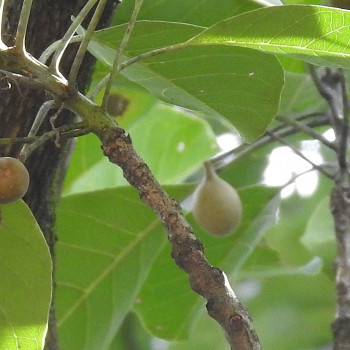Soap nut

Scientific Name :
Sapindus trifoliatus L.
Synonym(s) :
Sapindus laurifolius Vahl
Local/Common name(s) :
Soap nut
Family :
Sapindaceae
Habit :
Tree
Flowering/Fruiting Time :
December-April
Habitat :
Semi-evergreen and moist deciduous forests, also in the plains
Endemic :
No
Status (IUCN) :
Distribution :
South Asia
Nativity :
Indigenous
Uses :
Traditional washing soap
Description (Morphology) :
Trees, to 18 m high, bark 4-6 mm thick, greyish-brown; brittle or semi fibrous; branchlets lenticellate. Leaves paripinnate, alternate, estipulate; leaflets 4-6, opposite or subopposite, 6.5-25 x 2.5-11.5 cm, elliptic-oblong, elliptic-lanceolate, elliptic or lanceolate, apex acuminate, base oblique, round or acute, margin entire, glabrous, chartaceous; rachis 4.5-10 cm, stout, glabrous, swollen at base; lateral nerves 6-17 pairs, pinnate, ascending, prominent, secondary laterals prominent; intercostae reticulate, prominent. Flowers polygamous, greenish-white, 5-6 mm across, in axillary or terminal panicles; panicles densely pubescent. Sepals 5, pubescent outside, glabrous within, ovate, unequal, in 2 series, much imbricate. Petals 5, linear-lanceolate, softly woolly on the inner surface except the claw, scales minute or absent; disc concave, margin fleshy, hirsute. stamens 8, inserted within the disc; filaments free, pilose; anthers oblong. Ovary superior, tomentose, not lobed, 2-3-celled, ovule 1 in each cell; style terminal, stigma 2-3 lobed. Fruit a drupe, 16-18 mm across, globose, greenish-yellow, fulvous hairy when young, wrinkled when ripe; seeds 2-3, globose, black.





